January's fires roared very close to Lopez Canyon, but mercifully spared it. We got decent rain last week, so I went up to see how the place was doing. I was relieved: it is as gorgeous and fascinating as ever. The creek bed is now deeper and wider, and the eerie hills and the multi-colored sands still yield a bewilderingly diverse assortment of ancient rocks, clues to the mysteries of LA's complex geology.
 |
| As painted by Herman Herzog, 1877 |
In February of 2019 I stumbled (literally) across this sensational landscape for the first time. Here is how it looked then:
To see it as it evolved over the past five years, click the link below:
The Transformation of Lopez Canyon
The oak grove is as magical as ever, though sadly, it is still a magnet for litter and dumping.
Coast live oaks, Quercus agrifolia, are well adapted to periodic fires. The thick bark protects the cambium, which is the outer, growing part of the tree. The Creek Fire of 2017 ripped through Lopez Canyon, and adjacent Kagel Canyon and Little Tujunga Creek, from the ground up. Above, the fire seems to have burned out the base and through the interior wood of the trunk as far as head-height. But with the cambium intact, the tree is still spreading a glorious green canopy. Below is another example.
This cholla cactus is one of two left in the canyon. It was savaged by the fire and for a few years presented a very sorry sight. I am glad to see it has fully recovered and has almost doubled its height since 2019.
Hollyleaf cherries, Prunus ilicifolia, dominate the middle canyon. They were nowhere to be seen in 2019.
The meadow's stand of giant wild rye seems to have been scorched by last summer's blazing 100-degree temperatures. Leymus condensata (annoyingly, also called by its anagram Elymus condensata) is plentiful elsewhere up and down Lopez Canyon, but this was its largest stand. Watch this space to see if it comes back.
 |
| Toasted rye. |



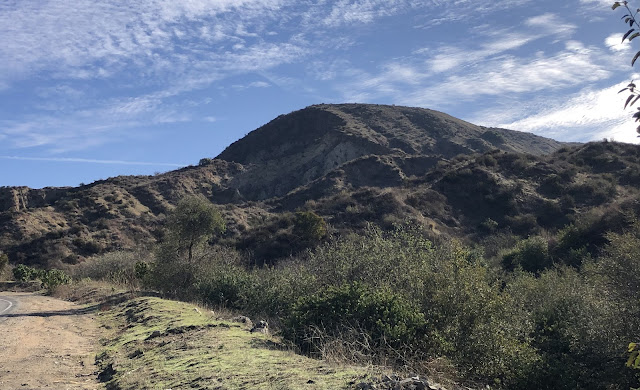



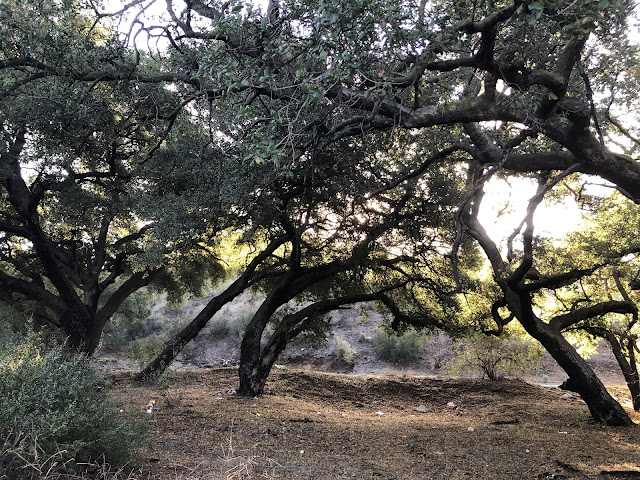









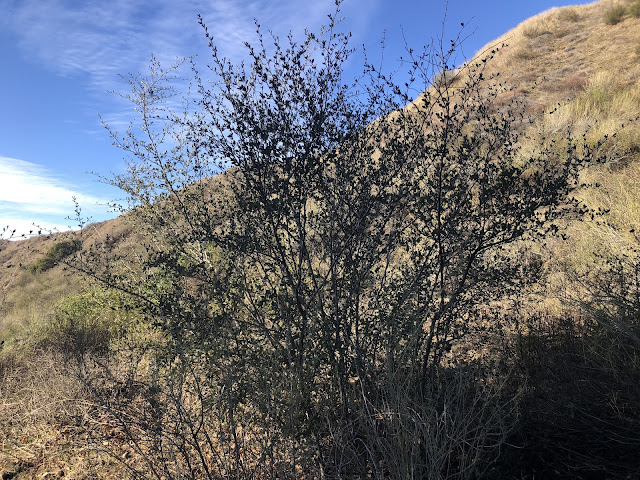





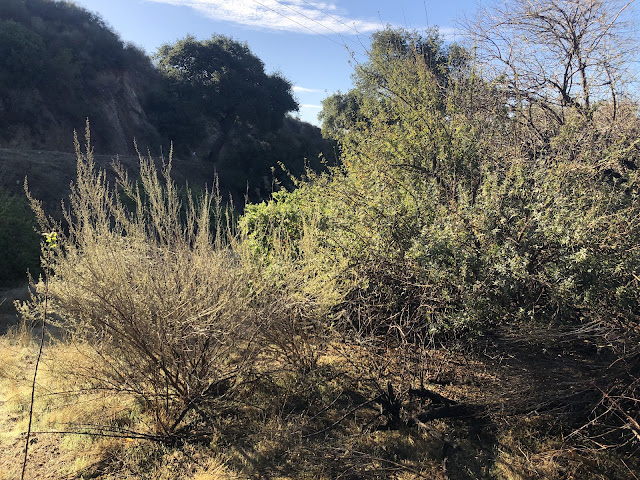




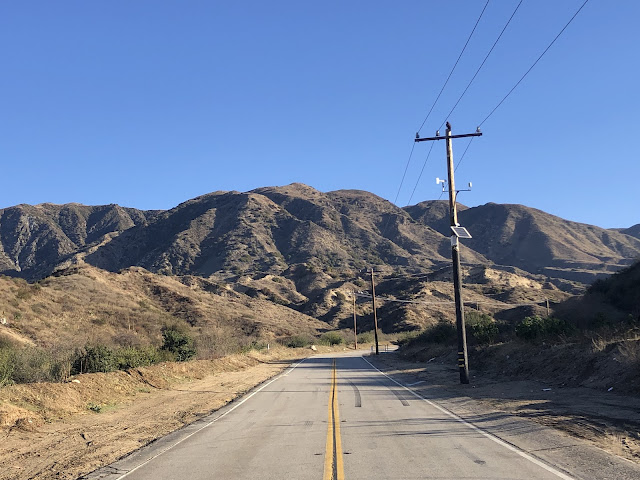




No comments:
Post a Comment